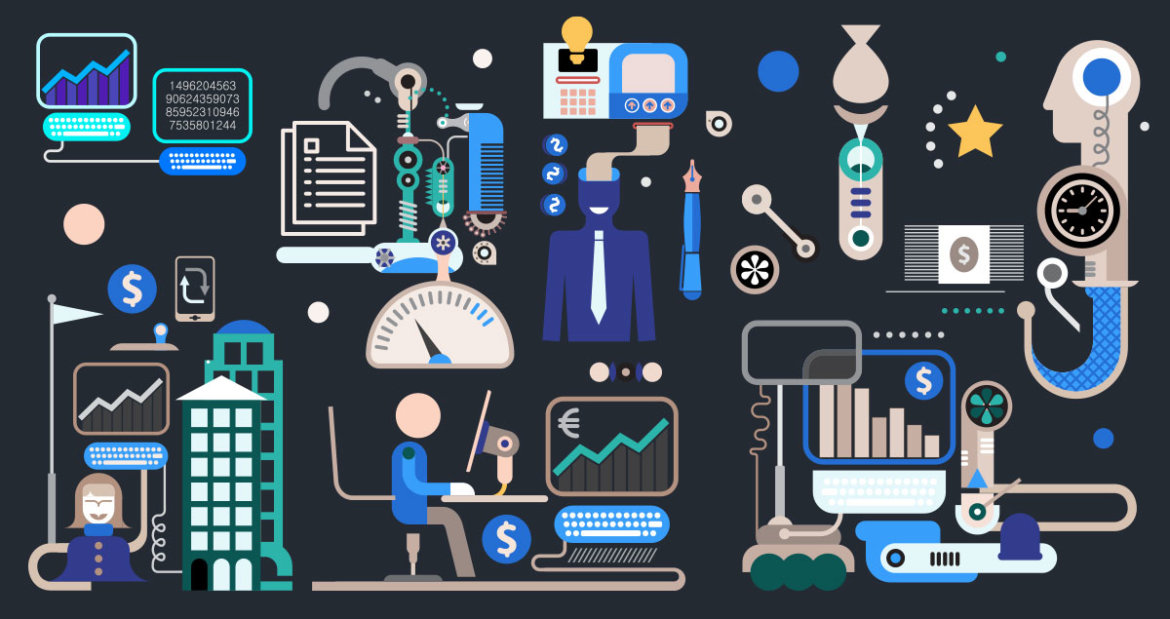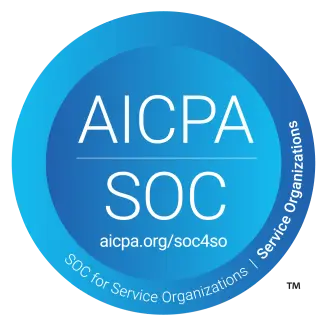
INTERVIEW WITH
Stephen McIntosh
Tax consultant, auditor, INTARIA AG
In July of 2020, MindBridge took another step in the journey to global expansion. Partnering with Regensburg-based startup, 5FSoftware, MindBridge’s software solution is now being distributed to firms in the German and Austrian markets.
This is a major development that will allow more firms to expose anomalies, intentional or not, during their annual financial statement audits as efficiently as possible.
We sat down with Stephen McIntosh, an auditor and tax consultant for Intaria AG in Munich. Intaria is the first firm in Germany to use MindBridge, and we wanted his perspective on the importance of AI for audits, and what the future of the industry holds.
Stephen sat down with Marco Bogendörfer, co-founder of 5FSoftware.
For more information on MindBridge’s partnership with 5FSoftware, check out our release here, or check out the full interview from 5FSoftware here.
Without further ado, enjoy this excerpt.
This interview has been translated into English from German.
Marco Bogendörfer: Let’s start with a look at the audit profession in general: How far have we come in the digital transformation of the auditing practice in Germany and Austria – and what impact does it currently have on existing processes in an annual audit?
Stephen McIntosh: That’s not easy to answer and depends crucially on which audit firm you look at. The Big Four have invested several billion euros in digital technologies for years now to create their own solutions. Of course, small and medium-sized audit firms do not have this financial strength.
Data such as requirement notification, order, receipt of goods or payment are still too often left unused during the annual audit.
But beyond that, in my opinion, it is a matter of fundamental affinity for digital solutions and a willingness to invest in the auditing practice or its management. If it is the case that firms possess this willingness, the digital transformation can and will continue to advance in medium-sized and smaller auditing firms as well.
Marco Bogendörfer: How can digital tools make audits more efficient and higher quality?
Stephen McIntosh: An increase in efficiency is usually achieved when digital audit tools can take over recurring tasks. When employees no longer have to manually print, envelope, send and evaluate balance confirmations, they can focus more on important issues.
With digital audit tools – the International Standards on Auditing (ISA) refer to them as Automated Tools and Techniques (ATT) – I can seamlessly analyze 100 percent of the business transactions of a fiscal year for specific anomalies. A human being would take far too long to do this. Increasing audit quality by using digital tools such as these is our top priority. We can review certain areas without any gaps, while in other areas digital audit tools enable us to take samples of even better quality, as we can consciously select items with a greater risk of error.
Marco Bogendörfer: Currently, what are the biggest obstacles or challenges for the widespread use of data analytics tools?
Stephen McIntosh: From a technical point of view, the biggest challenge is to get the data first and then to import it quickly and completely into the respective data analysis tool. There are simply so many different ERP or accounting systems that the process of exporting data is never the same and the information contained in each is very different.
Within the auditing practice, the auditing process must be adapted. The analyses must be used from the beginning of the audit planning and then until the end of the audit. Only then can the integration of the software lead to increased efficiency. However, this also requires that the audit teams have IT competence in addition to accounting and auditing knowledge. This in turn means that training is required for the employees concerned.
Marco Bogendörfer: How does MindBridge add value during a final audit?
Stephen McIntosh: In many ways. The first, very significant improvement compared to our previous tool is that MindBridge generates the balance sheet and profit and loss statement from the imported data. We can therefore immediately check the data received from the client for completeness and accuracy.
MindBridge carries out a risk assessment of all transactions in a fiscal year. For each individual transaction, the system is transparent in showing how it arrived at the risk assessment. In particular, the AI-based machine learning algorithms can identify those transactions that are unusual or conspicuous compared to all others.
We can immediately check the data received from the client for completeness and correctness with MindBridge.
But beyond that, in my opinion, it is a matter of fundamental affinity for digital solutions and a willingness to invest in the auditing practice or its management. If it is the case that firms possess this willingness, the digital transformation can and will continue to advance in medium-sized and smaller auditing firms as well.
Marco Bogendörfer: How can digital tools make audits more efficient and higher quality?
Stephen McIntosh: An increase in efficiency is usually achieved when digital audit tools can take over recurring tasks. When employees no longer have to manually print, envelope, send and evaluate balance confirmations, they can focus more on important issues.
With digital audit tools – the International Standards on Auditing (ISA) refer to them as Automated Tools and Techniques (ATT) – I can seamlessly analyze 100 percent of the business transactions of a fiscal year for specific anomalies. A human being would take far too long to do this. Increasing audit quality by using digital tools such as these is our top priority. We can review certain areas without any gaps, while in other areas digital audit tools enable us to take samples of even better quality, as we can consciously select items with a greater risk of error.
Marco Bogendörfer: Currently, what are the biggest obstacles or challenges for the widespread use of data analytics tools?
Stephen McIntosh: From a technical point of view, the biggest challenge is to get the data first and then to import it quickly and completely into the respective data analysis tool. There are simply so many different ERP or accounting systems that the process of exporting data is never the same and the information contained in each is very different.
Within the auditing practice, the auditing process must be adapted. The analyses must be used from the beginning of the audit planning and then until the end of the audit. Only then can the integration of the software lead to increased efficiency. However, this also requires that the audit teams have IT competence in addition to accounting and auditing knowledge. This in turn means that training is required for the employees concerned.
Marco Bogendörfer: How does MindBridge add value during a final audit?
Stephen McIntosh: In many ways. The first, very significant improvement compared to our previous tool is that MindBridge generates the balance sheet and profit and loss statement from the imported data. We can therefore immediately check the data received from the client for completeness and accuracy.
MindBridge carries out a risk assessment of all transactions in a fiscal year. For each individual transaction, the system is transparent in showing how it arrived at the risk assessment. In particular, the AI-based machine learning algorithms can identify those transactions that are unusual or conspicuous compared to all others.
We can immediately check the data received from the client for completeness and correctness with MindBridge.
Additional added value is provided by the visualization of financial results and the many possibilities to dive directly into the trends and ratios for further evaluation. These are very helpful for understanding account performance during the course of the year, and for discussing the causes of these developments with clients.
Marco Bogendörfer: How does MindBridge actually work for auditing practice and what kind of data sets can be analyzed with the help of MindBridge?
Stephen McIntosh: MindBridge analyzes all postings of a fiscal year at the general ledger level. For this purpose, we usually have our clients provide us with the “export tax audit”, formerly also called GdPdU data. MindBridge also offers the possibility of carrying out analyses for the subsidiary ledgers of debtors and creditors. We do not currently use these yet, as we are focusing on the introduction and use of the analyses at the general ledger level.
Marco Bogendörfer: How was the use of MindBridge in your office received by employees? Clients?
Stephen McIntosh: All employees who have seen MindBridge or its analyses were impressed by the visual presentations and the possibilities of evaluating and analyzing the existing data in greater depth. There is also great interest in seeing and questioning the risk assessment.
During an audit, I showed my client MindBridge and we looked at the higher risk transactions together. We also questioned why the AI-based algorithms classified these transactions as “high risk”. For all transactions, we were able to understand the “assessment” of the algorithms, even if in the end there was no booking error or even a fraud issue behind it. But first and foremost, it was all about identifying anomalies, so-called outliers, and that worked. My client took a very positive view of the software and also the use of the software during our audit.
Marco Bogendörfer: How can the audit evidence obtained through new technologies be documented appropriately?
Stephen McIntosh: Basically, there are no concrete regulations on how the use of the technologies, and the results and audit evidence obtained must be documented. As a result, it must be possible for a knowledgeable outside third party to understand what was done with which results and on what basis and what conclusions were drawn from them.
MindBridge, for example, provides a standard report that explains the analyses carried out by way of example, as well as graphically depicting the risk classification of all transactions and the risks per balance sheet and P&L item with the respective employees making book entries – and summarizing the quantitative analysis results per analysis (control point). This report can be supplemented with comments via editable text fields, so that the conclusions drawn in each case and/or the further audit procedures can be documented centrally in this report. In my opinion, this report is a good basis for documentation.
Marco Bogendörfer: What skills and mindset should auditors bring to the successful digitization of an annual audit?
Stephen McIntosh: They should be open to current digital developments, recognize the relevance of digital transformation in their own auditing practice and be willing to invest. It is also very helpful if auditors have a certain amount of knowledge about the basic nature and structure of the financial data to be analyzed.
They should be open to current digital developments, recognize the relevance of digital transformation in their own practice and be willing to invest.
We are in the middle of the nationwide implementation of MindBridge and the investments have been kept within reasonable limits. The intensive work on digitization regularly leads to further exciting topics and questions, so there are already other topics that I would like to tackle next.





